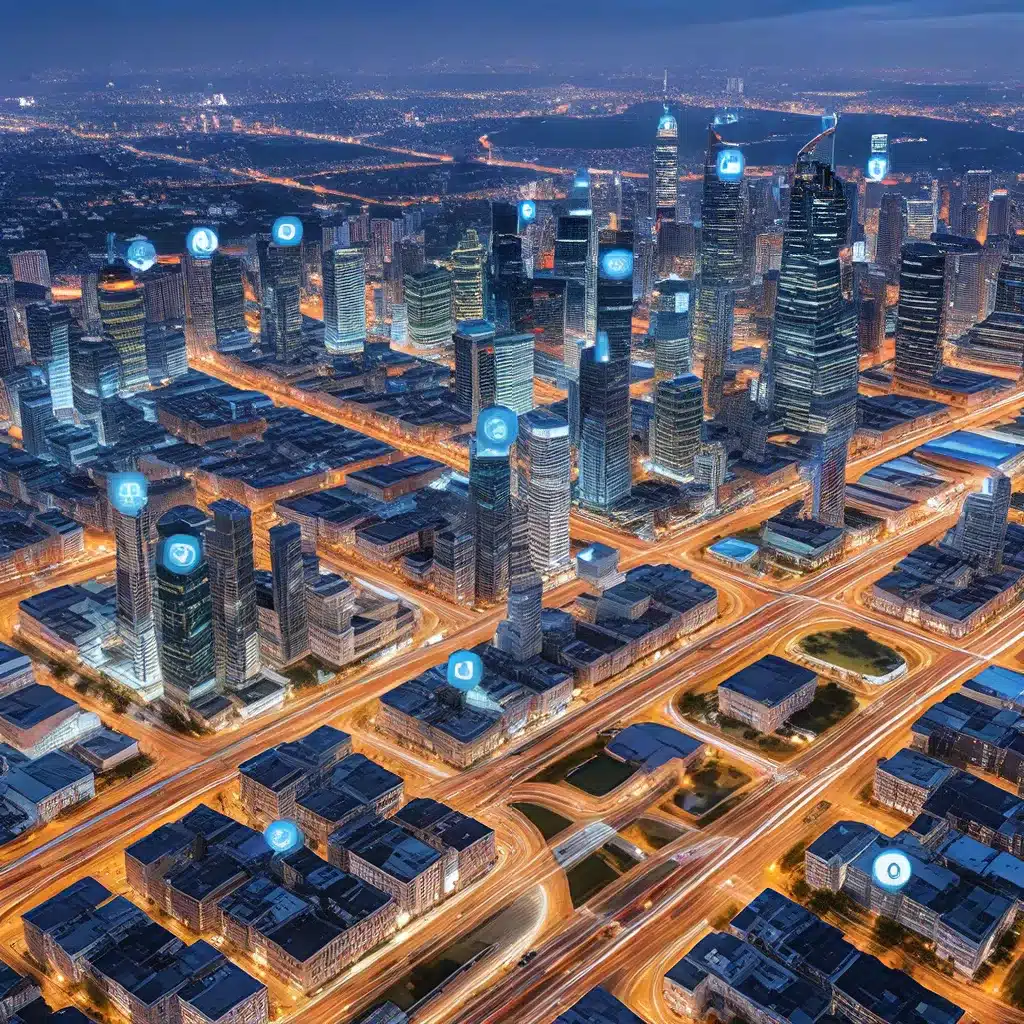
In the rapidly evolving world of sensor networks and the Internet of Things (IoT), the advent of 5G technology has ushered in a new era of possibilities. As IoT applications become increasingly sophisticated and data-intensive, the need for precise sensor calibration has never been more crucial. This article delves into the intricacies of sensor calibration, exploring how it can unlock the true potential of ultrafast 5G connectivity in the realm of sensor networks and IoT.
The Importance of Sensor Calibration in IoT
At the heart of any sensor network or IoT system lies the accuracy and reliability of the sensors themselves. These sensors are responsible for capturing and transmitting a wide range of data, from environmental factors to industrial processes. Proper sensor calibration ensures that the data collected is precise, consistent, and representative of the real-world conditions.
Accurate sensor calibration is critical for a variety of IoT applications, such as smart cities, industrial automation, healthcare monitoring, and environmental management. Inaccurate or uncalibrated sensors can lead to erroneous data, skewing the insights and decision-making processes that rely on this information. By ensuring meticulous sensor calibration, IoT systems can deliver reliable and actionable data, driving more informed decisions and optimizing various processes.
The Impact of 5G on Sensor Networks
The advent of 5G technology has revolutionized the landscape of sensor networks and IoT. With its ultrafast data transmission speeds, low latency, and increased network capacity, 5G has opened up new possibilities for real-time data processing and edge computing in sensor networks.
5G networks enable sensor-rich IoT environments to transmit large volumes of data with minimal delays, allowing for more efficient monitoring, automation, and decision-making. This, in turn, heightens the importance of sensor calibration, as the accuracy and reliability of the data become even more crucial in the face of increased connectivity and processing capabilities.
Challenges in Sensor Calibration for 5G-enabled IoT
While the benefits of 5G-enabled IoT are undeniable, the integration of this technology also presents unique challenges when it comes to sensor calibration. Some of the key challenges include:
-
Sensor Diversity: The proliferation of IoT devices and the variety of sensor types required to support diverse applications can complicate the calibration process. Ensuring consistent and accurate calibration across a wide range of sensors is a significant challenge.
-
Dynamic Environments: Many IoT applications operate in dynamic, constantly changing environments, such as smart cities or industrial facilities. Sensor calibration must be able to adapt to these fluctuations, maintaining precision and accuracy over time.
-
Data Processing and Latency: The high-speed data transmission capabilities of 5G networks can generate massive amounts of sensor data that need to be processed and analyzed in near-real-time. Effective sensor calibration algorithms and data processing pipelines are crucial to keeping up with these demands.
-
Energy Efficiency: IoT devices, particularly those in remote or inaccessible locations, often rely on battery power or energy harvesting. Sensor calibration techniques must be optimized to minimize energy consumption and extend the operational lifespan of these devices.
-
Security and Privacy: As sensor networks become more interconnected and ubiquitous, the need for robust security measures and data privacy protections becomes paramount. Sensor calibration processes must incorporate security considerations to safeguard the integrity of the collected data and the overall IoT system.
Overcoming Sensor Calibration Challenges in 5G-enabled IoT
To address the challenges of sensor calibration in the age of 5G-enabled IoT, a multifaceted approach is required. Here are some strategies and innovations that can help unlock the full potential of sensor networks:
-
Adaptive Calibration Algorithms: Developing machine learning-based calibration algorithms that can adapt to changing environmental conditions and sensor variations can significantly improve the accuracy and reliability of sensor data.
-
Distributed Calibration Techniques: Leveraging the edge computing capabilities of 5G networks, sensor calibration can be performed closer to the data sources, reducing latency and enabling real-time adjustments.
-
Sensor Fusion and Redundancy: Combining data from multiple, complementary sensors can provide a more comprehensive and accurate representation of the monitored environment, while also improving the overall robustness of the sensor network.
-
Energy-efficient Calibration Protocols: Implementing energy-efficient sensor calibration algorithms and leveraging technologies like energy harvesting can extend the operational lifespan of IoT devices, particularly in remote or hard-to-access locations.
-
Secure Calibration Processes: Integrating cybersecurity best practices into sensor calibration workflows, such as encrypted data transmission, tamper-resistant hardware, and secure firmware updates, can safeguard the integrity of the IoT system.
-
Standardized Calibration Frameworks: Developing industry-wide standards and protocols for sensor calibration can promote interoperability, simplify deployment, and ensure consistent data quality across diverse IoT ecosystems.
The Future of Sensor Calibration in 5G-enabled IoT
As the IoT landscape continues to evolve, the role of sensor calibration will only become more critical. With the advent of 5G technology, the opportunities for sensor networks to unlock new levels of data accuracy, real-time decision-making, and process optimization are boundless.
Sensor networks will play a pivotal role in shaping the future of industries, cities, and ecosystems, with sensor calibration serving as the foundation for reliable, high-quality data. By addressing the challenges and embracing the innovative solutions outlined in this article, IoT stakeholders can harness the full potential of 5G-enabled sensor networks, driving transformative advancements across a wide range of applications.
As we move into the era of ultrafast 5G connectivity, the importance of sensor calibration cannot be overstated. By ensuring the accuracy and reliability of sensor data, IoT systems can unlock new levels of efficiency, automation, and decision-making, ultimately paving the way for a more connected, responsive, and sustainable future.